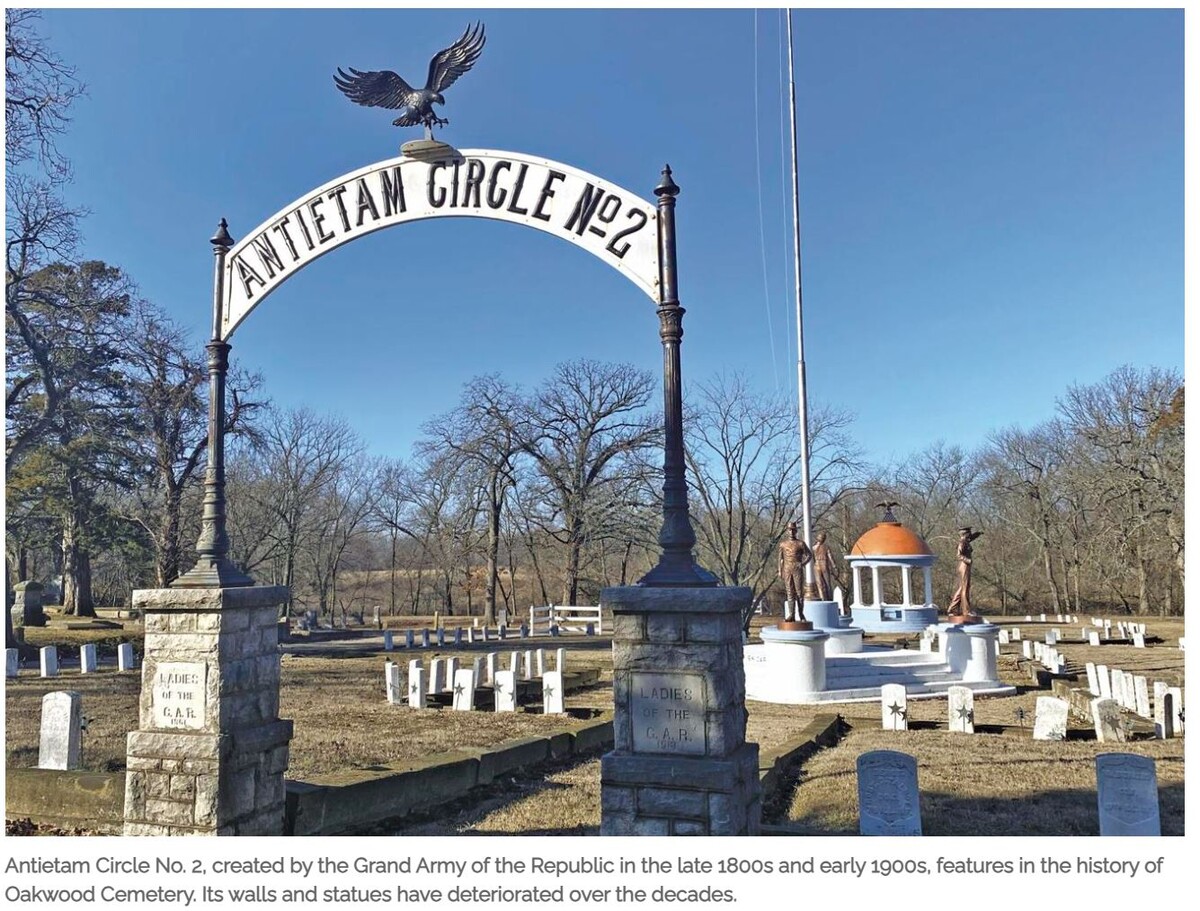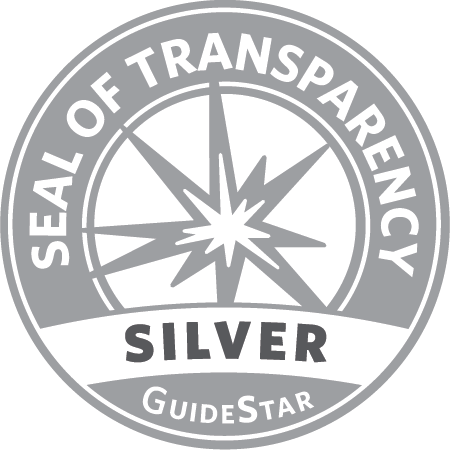Oakwood Cemetery OK’d for Register of Historic Kansas Places

The board also recommended forwarding the cemetery for consideration for listing on the national register. This process could take weeks or months.
Since its organization in 1872, Oakwood Cemetery has become the final resting place for 366 Union veterans who fought in the Civil War, as well as four confederate soldiers, a Congressional Medal of Honor winner, many of Parsons’ earliest settlers, prominent citizens and businessmen, including a former state governor.
The designation will allow the city to apply for grants and other funding for upkeep and improvements. Dave Mattox, who started an endowed fund for the cemetery at the Parsons Area Community Foundation (Historic Oakwood Cemetery Improvement Funds), is raising money to repair certain features in the cemetery, including the Grand Army of the Republic circles that have graves of many Civil War era veterans.
Mattox and his wife, Julie, prepared a 44-page application for the state Board of Review that included detailed histories of the cemetery and city and photos of the various cemetery structures and features. The application focused on the time period between 1872 and 1924, when many of the improvements were made to the cemetery to make it look generally as it does today. This is also the period when many of the pioneers in Parsons were buried at the cemetery.
Founders of the city of Parsons started discussing the need for a cemetery shortly after the city’s founding in 1871. The Parsons Cemetery Association formed in 1872 and Oakwood was founded on 20 acres donated by the Parsons Town Co., although the cemetery was outside of the city limits at the time. The original cemetery was platted in a rectangle with 46 blocks divided into 685 lots. The Coffey addition was added in 1904. In the early 1900s, the city began trying to transform the cemetery into a park or garden space.
Before Oakwood, burials were in the southeast section of the city. These graves were moved to Oakwood between 1872 and 1980, according to the application.
Antietam Post No. 64, Grand Army of the Republic, purchased lots in Block 37 in 1886 for burying Union veterans who were without means of paying for burials. The G.A.R. bought lots in Block 38 in 1889 for a second burial area for Union veterans. The circles had room for 125 burials and the G.A.R. transformed the circles over 30 years generally to what exists today, including the two Civil War era cannons, the rotunda and the four statues representing the military branches at the time.
The Hannah Jameson Chapter of the Daughters of the American Revolution in 1911 hired J.L. Medaris to build the cast iron arched overhead gateway on the north end of the cemetery. Other landscaping and road and walkway improvements were added around the same period. Labette County collected a half-mill tax on properties in 1905 and 1906 for Oakwood Cemetery improvements, including the G.A.R. burial grounds. The tax generated about $5,000.
The Maxwell Memorial in the center of the Coffey addition was added in 1924 for $8,000.
“Oakwood Cemetery has retained much of its historic integrity including location, setting, design and building materials. The G.A.R. circles, although deteriorating, still look much like they did when finished in 1913,” Mattox wrote in the application.
Today, Oakwood features 53 acres with over 20,000 burials in its 82 blocks.
Besides aging and deterioration, vandals and thieves have done a number on the cemetery over the years.
“The (four G.A.R. military) statues look today much as they did when installed but are showing their age. Most of their weapons, along with several of their hands are now missing. Bullet holes and other damage show they have stood for more than a century in honor of the G.A.R.,” Mattox wrote in the application.
The two cannons formerly featured two pyramids of cannon balls, but the cannon balls have since disappeared.
The application also included details on the potter’s field, where citizens and others who could not afford burials were buried. More than 1,000 are buried in the potter’s field and these gravesites may hold the remains of Exodusters, early Black settlers from the South who traveled north and settled in Parsons and elsewhere in the late 1870s and early 1880s. The application said that research continues on the potter’s field and Exodusters. Many Parsons families can trace their histories to the Exodusters.
Many prominent citizens from the early days of Parsons are buried at Oakwood, including businessmen, the former governor (Clyde Reed) and William Wallace Cranston, who won the Congressional Medal of Honor for valor during the Civil War. He and three others on May 2, 1863, voluntarily brought a wounded confederate officer from within the enemy’s line in the face of constant fire. The officer provided important information that was key to the battle plan and all four men received the CMH for heroic and timely action. Cranston moved to Labette County in 1882 and moved to Parsons nine years later. He was elected to Kansas House in 1888, died in 1907 and is buried in Block 9 of Coffey addition, according to the application.
Some of this history came up on Saturday morning during the virtual Board of Review meeting. Oakwood and eight other properties were considered for both the state and national registers and two others for the state register only. Carver Social League, a building in Pittsburg built in the late 1940s as a social club for Black citizens, was one of the properties considered and approved for the state register and recommended for the national register as well.
Christopher Leitch of the Kansas State Historical Society presented information on Oakwood, touching on the history and including photos in his presentation.
He noted that 336 Civil War veterans are buried at Oakwood, along with four confederate veterans. The G.A.R. circles offer a final resting place for 125 Spanish-Amerian War and Civil War veterans.
Board member Jean Schodorf was impressed with the number of Civil War veterans buried at Oakwood.
“That is huge. I count Civil War graves in cemeteries and that is huge,” Schodorf said. She is vice chair of the Kansas Historic Sites Board of Review.
“It’s a beautiful cemetery,” Schodorf said.
“It is. I enjoyed reading the history on this,” Leitch said.
The board then voted to accept Oakwood into the Kansas Register of Historic Places and to recommend it for the national registry for exploration and settlement.
Mattox and his wife watched the presentation Saturday between customers at Bleacher Gear, 1730 Main.
“I’m happy,” Dave Mattox said.
He said it could take six weeks for the national board to decide on the cemetery’s status. It took a year for Oakwood to make it to the agenda for the Kansas board. He said he submitted the application in February 2023.
“I’m relieved that it went through. We hope for the national one in a month or two,” he said.
He added that he would look at grant opportunities that Oakwood’s designation opens from the state.

